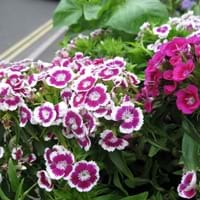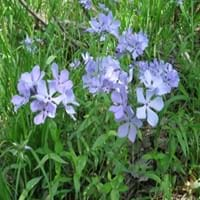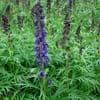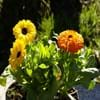Life Span
Biennial and Perennial
Perennial
Type
Flowering Plants
Flowering Plants
Origin
Europe, Northern Europe, Western Europe
Northeastern United States, Mid-Atlantic United States, Southeastern United States, Central United States, Texas, Canada
Types
'Bellagio Apricot' begonia, 'Bellagio Blush' begonia, 'Bellagio Pink' begonia
Blue Moon, Clouds of Perfume
Habitat
Subtropical climates, Tropical regions
Rich Woods
USDA Hardiness Zone
3-9
4-8
Sunset Zone
21,22
1a, 1b, 2a, 2b, 3a, 3b, 4, 5, 6, 7, 8, 9, 10, 11, 12, 13, 14, 15, 16, 17
Habit
Cushion/Mound-forming
Mat-forming
Flower Color
White, Yellow, Red, Pink, Light Pink, Rose, Dark Red, Orange Red
Blue Violet
Flower Color Modifier
Bicolor
Bicolor
Fruit Color
Not Available
Not Available
Leaf Color in Spring
Light Green, Blue Green, Gray Green
Green
Leaf Color in Summer
Light Green, Blue Green, Gray Green
Green
Leaf Color in Fall
Light Green, Blue Green, Gray Green
Green
Leaf Color in Winter
Light Green
Not Available
Leaf Shape
Long Linear
Ovate-lanceolate
Plant Season
Spring, Summer, Fall
Spring
Sunlight
Full Sun, Partial Sun
Partial Sun, Partial shade
The pH of Soil
Neutral
Neutral
Soil Drainage
Well drained
Well drained
Bloom Time
Early Spring, Spring, Late Spring
Spring
Tolerances
Drought, Shade areas
Not Available
Where to Plant?
Container, Ground, Pot
Container
How to Plant?
Divison, Seedlings, Stem Planting
Cuttings, Seedlings
Plant Maintenance
Low
Medium
Watering Requirements
Needs watering once a week
Requires regular watering
In Summer
Moderate
Lots of watering
In Spring
Moderate
Moderate
In Winter
Average Water
Average Water
Soil Drainage Capacity
Well drained
Well drained
Sun Exposure
Full Sun, Partial Sun
Partial Sun, Partial shade
Pruning
Cut or pinch the stems, Remove damaged leaves, Remove dead branches, Remove dead leaves
Remove dead flowers
Fertilizers
All-Purpose Liquid Fertilizer, fertilize in growing season, fertilize in spring, fertilize in summer
Apply 10-10-10 amount
Pests and Diseases
Fusarium wilt, Gray mold, Leaf spot, Root rot, Rust, Slugs
Leaf spot, Powdery mildew, Rust
Plant Tolerance
Drought, Shade areas
Drought
Flower Petal Number
Single, Double, Semi-Double
Single
Foliage Texture
Fine
Medium
Foliage Sheen
Matte
Matte
Attracts
Not Available
Hummingbirds, Butterflies
Allergy
Asthma
Mild Allergen
Aesthetic Uses
Beautification, Bouquets, Cottage Garden
Ground Cover
Beauty Benefits
Not Available
Not Available
Environmental Uses
Air purification
Air purification
Medicinal Uses
Bronchitis, Candidiasis, Cold, Digestive disorders, Dysentry, Haemoptysis, Liver problems, Menstrual Disorders, Scrofula, Swelling
Boils, Eczema, Intestinal disorders
Part of Plant Used
Whole plant
Flowers, Leaves, Root
Other Uses
Food for animals
As a tea substitute, Used as eyewash
Used As Indoor Plant
Yes
No
Used As Outdoor Plant
Yes
Yes
Garden Design
Bedding Plant, Container, Cutflower, Feature Plant, Groundcover, Hanging Basket, Mixed Border, Rock Garden / Wall
Mixed Border, Rock Garden / Wall, Wildflower
Botanical Name
DIANTHUS barbatus 'Heart Attack'
PHLOX divaricata 'Blue Moon'
Common Name
Heart Attack Sweet William, Sweet William
Wild Blue Phlox, Woodland Phlox
In Hindi
स्वीट विलियम
Wild Blue Phlox
In German
Bartn
Wild Blue Phlox
In French
sweet william
Wild Blue Phlox
In Spanish
Guillermo dulce
Wild Blue Phlox
In Greek
είδος γαρύφαλλου
Άγρια μπλε Phlox
In Portuguese
william doce
Wild Blue Phlox
In Polish
słodki William
Dziki Niebieski Phlox
In Latin
amaranthus
Phlox ferae blue
Phylum
Magnoliophyta
Magnoliophyta
Class
Magnoliopsida
Magnoliopsida
Order
Caryophyllales
Solanales
Family
Caryophyllaceae
Polemoniaceae
Clade
Angiosperms, Core eudicots, Eudicots
Angiosperms, Asterids, Eudicots
Tribe
Not Available
Phlocideae
Subfamily
Not Available
Polemonioideae
Number of Species
Not Available
Season and Care of Sweet William and Wild Blue Phlox
Season and care of Sweet William and Wild Blue Phlox is important to know. While considering everything about Sweet William and Wild Blue Phlox Care, growing season is an essential factor. Sweet William season is Spring, Summer and Fall and Wild Blue Phlox season is Spring, Summer and Fall. The type of soil for Sweet William is Loam and for Wild Blue Phlox is Loam while the PH of soil for Sweet William is Neutral and for Wild Blue Phlox is Neutral.
Sweet William and Wild Blue Phlox Physical Information
Sweet William and Wild Blue Phlox physical information is very important for comparison. Sweet William height is 45.00 cm and width 30.00 cm whereas Wild Blue Phlox height is 30.50 cm and width 30.50 cm. The color specification of Sweet William and Wild Blue Phlox are as follows:
Sweet William flower color: White, Yellow, Red, Pink, Light Pink, Rose, Dark Red and Orange Red
Sweet William leaf color: Light Green, Blue Green and Gray Green
Wild Blue Phlox flower color: Blue Violet
- Wild Blue Phlox leaf color: Green
Care of Sweet William and Wild Blue Phlox
Care of Sweet William and Wild Blue Phlox include pruning, fertilizers, watering etc. Sweet William pruning is done Cut or pinch the stems, Remove damaged leaves, Remove dead branches and Remove dead leaves and Wild Blue Phlox pruning is done Remove dead flowers. In summer Sweet William needs Moderate and in winter, it needs Average Water. Whereas, in summer Wild Blue Phlox needs Lots of watering and in winter, it needs Average Water.





